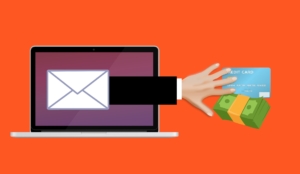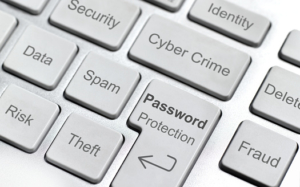Identity Theft — Types, Signs, and Protection for Victims
The internet is an awesome place where you can do things like shop or interact with family and friends you may not see all of the time. For as much fun as it is, though, it can also be quite dangerous.
 According to the U.S. Federal Trade Commission, in 2020, there were about 2.1 million fraud reports, and many of these were for the purpose of stealing another person’s identity.
According to the U.S. Federal Trade Commission, in 2020, there were about 2.1 million fraud reports, and many of these were for the purpose of stealing another person’s identity.
Victims of identity fraud may lose a lot of money, and their credit could be damaged for years. They also might have a lot of mental anguish and stress to deal with. There is a threat of identity theft for almost anyone, but if you know how to do your best to avoid it, as well as signs of ID theft, you can help to protect yourself and your family.
The Definition of Identity Theft
Most of us have heard of identity theft, but do you really know the definition? It is when a cybercriminal steals a person’s personal or financial data, generally in order to use the information for financial gain. It means they may try to get information on full names, Social Security numbers, birthdays, address, credit/bank account information, or even driver’s license information. Once they have this information, they can use it to apply for credit cards, open bank accounts, get insurance, or even do things like buy a house or car…all in the name of the victim.
How Does ID Theft Happen?
Before we get into the types of identity theft, it’s important to know how ID theft happens:
- A Phishing Scam – These days, phishing scams are all over the place, and they often happen via email or websites. Generally, with these scams, a person pretends to be someone you know or trust, such as posing as a customer service worker from your bank, in order to get information and personal data.
- Data Breaches – Many companies store the information of their customers, including your doctor, your ISP provider, your credit card company, and more. If there is a data breach, criminals will have easy access to this information, and it might even get sold on the dark web.
- Snooping on Social Media – Criminals often will get information to steal an identity by using social media. Most people, for instance, have their birthday on their Facebook page, and they might even have their home address. That, along with their name, might be all they need to gain access to other accounts. They can also look for things like pet names or kid’s birthdays, as many people use these for passwords or PINs.
- Hacking – A hacker can easily get into phones, tablets, or computers if they aren’t protected. They use malware and viruses to do this. Having a good antivirus software can help stop this, and it can help to protect your personal information and devices from the bad guys.
- Theft – Some criminals really go back to basics to steal someone’s identity. They can really just take it. By stealing your wallet, your purse, or even your phone can give them all of the information they need.
- Dumpster Diving – A criminal might also simply pull your information right out of the trash. If you are throwing away documents that have information such as your name, address, birthday, or other information, a thief can find this right in the garbage. Keep in mind that things like a bank statement or credit card statement can contain your number, and a pay stub may have your Social Security number on it. Always take a couple of minutes to shred any paperwork before you throw it out.
The Five Main Types of ID Theft
There are a ton of different types of identity theft, but there are five main ones:
Financial ID Theft
The most common type of identity theft is the financial variety. This is when a scammer uses a victim’s data for financial gain. This type of ID theft may take the following forms:
- A scammer might use your credit card information to buy things online.
- A hacker can literally steal money right out of your bank account – they often do this by taking small amounts here and there from unknowing victims. This amount might be so small that you may not even notice it — but when they do this over and over again, they can collect millions.
- A criminal can open new accounts in your name, too, by simply using your Social Security number and supporting data. For example, a person can open a credit line in your name, and then use all that credit…leaving you with the pay back.
The good news, however, is that it is fairly simple to protect yourself from ID theft by keeping an eye on your bills, your bank account, and credit card statements. If you see something that looks strange, you should immediately notify your bank or credit card company. You should also check your credit report for any changes. A decrease that you were not expecting could mean that there is some type of fraud going on. You can check your credit report in a number of ways, and most credit card providers offer it as a perk for customers.
You can also choose to place a fraud alert on credit reports, so that you can stop anyone from opening any new accounts by using your information. This means that lenders and creditors must take extra steps to verify your identity before they offer a credit increase or loans. A credit freeze might also be a great idea.
Medical ID Theft
Another type of identity theft is medical identity theft. This is when a criminal takes a person’s identity to get health care by posing as the victim. They can use this information to do things like obtain prescription drugs or even get expensive surgery done. This means that you will get the bills for all of this, and it can also negatively affect your health records. This can mean you will have difficulties getting insurance in the future, and it can also mean you won’t get the care you need in a health crisis.
You can help to minimize the risk of medical identity theft by taking the time to review any and all medical claims you might get in the mail. If you see anything that doesn’t look right, such as a prescription you didn’t get, you should immediately contact your doctor’s office and your insurer. You should also contact the U.S. Department of Health and Human Services to make a claim.
Criminal ID Theft
This type of identity theft occurs when a person is arrested for a crime, but then they use the name of someone else. They might be able to do this by using a fake or stolen ID, such as a driver’s license, to show the cops.
This can be a difficult type of ID theft to notice if you are a victim until some type of consequence happens, such as –
- You get a court summons for a crime you didn’t commit
- You get a bench warrant for your arrest
- You get information that someone is performing a background check on you
One of the things that you can do to protect yourself against criminal ID theft is to protect your ID. If your driver’s license or state-ID is stolen or lost, you should immediately report it to law enforcement or the DMV. Also, you should make an effort to limit the type of information you share online.
Synthetic ID Theft
This is the fastest growing type of ID theft in the US, and it is the practice of people creating a fake ID using the real information of the victim. The bad guys might, for instance, use information such as the Social Security number, birthday, and address of three different people, and then combine this information to create a new ID. They can then use this information to commit fraud.
The most important thing to know about synthetic ID theft is that you may be able to stop it by knowing that it’s happening, and then acting quickly. For instance, if you get a piece of mail that has your address on it, but a different name, or you get a phone call to your number asking for someone you don’t know over and over again, this could be an issue. Again, you should be checking your credit reports for anything strange, which could indicate that there is an issue. An identity monitoring service may also help to catch this type of ID theft.
Child ID Theft
Finally, we have child ID theft. In this case, a scammer steals the information from a child to open a new account or credit line in that child’s name. Then, they can use that information to do things like apply for benefits, get a driver’s license, or even purchase a home. It is easier for a scammer to get away with this than with an adult’s information, as most children don’t have any type of credit nor financial accounts.
A sad fact, here, is that the ID theft of a child is often done by their own family or family friend, as they will have easy access to the child’s information. Most of the time, they can get away with it for years, as a minor typically won’t even realize that they are a victim until they try to do something like take out a student loan for college.
The best way to check on this is to see if your child has any type of credit report with TransUnion, Experian, or Equifax. If they do, look at the report, and then let authorities know if there is anything suspicious. You also might consider placing a freeze on your child’s report to help to minimize any type of fraud from occurring.
Signs that You are a Victim of ID Theft
None of us want to be left in the cold when it comes to ID theft, so by knowing the signs you can use to spot it, you can get ahead of it quickly.
Finally, here are some of the signs you should look for:
- Fraud alerts from a bank or other financial institution – most banks have some type of security in place to notify them and the customer if there is something weird going on. For instance, if you are in Chicago, and your credit card is used in Tokyo, there could be a big problem.
- Your credit score changes unexpectedly – A credit score that rises unexpectedly could mean that someone is attempting to extend your credit, and a strong dip in your score might mean that someone is trying to get a loan in your name or there is a bill in your name that has gone to collection.
- Your financial accounts have changes – It is important to check your bank statements at least every few weeks and look for anything that seems unfamiliar to you. You should also look to see if there are any new credit accounts or lines of credit in your name.
- You apply for credit, and you are denied – if you have a decent credit score, and you apply for credit, you probably think that you are going to get approved…. if you don’t, you should check your credit report, as someone could be up to something.
- You get strange phone calls from a collection agency – If you start getting phone calls from a debt collector or collection agency that you don’t owe, there could be an account open in your name that you don’t know about. Check your credit report, immediately.
- You get mail that is odd – You may also get some mail that is sent to your address that seems strange. This might be medical bills or other bills that you do not recognize.
- Your tax filing is rejected – Additionally, you may notice that when you try to file your taxes that they are rejected. This could mean that someone has already filed in your name. If this happens to you, contact the IRS immediately.
Written by Robert Siciliano, CEO of Credit Parent, Head of Training & Security Awareness Expert at Protect Now, #1 Best Selling Amazon author, Media Personality & Architect of CSI Protection Certification.

 Check Your Passwords – Every online account you have should have a different password. Never use the same password for more than one account. You can easily fix this issue by using a password manager. Also, don’t use specific words/phrases or keyboard sequences when creating passwords. A password manager can even generate passwords for you.
Check Your Passwords – Every online account you have should have a different password. Never use the same password for more than one account. You can easily fix this issue by using a password manager. Also, don’t use specific words/phrases or keyboard sequences when creating passwords. A password manager can even generate passwords for you.

 You might be wondering how you can become a victim of an identity thief just by filing your taxes. There are a couple of ways scammers do this. First, the thief will use your Social Security number to file taxes, but plug in their mailing address and then when your refund comes around, they take your refund.
You might be wondering how you can become a victim of an identity thief just by filing your taxes. There are a couple of ways scammers do this. First, the thief will use your Social Security number to file taxes, but plug in their mailing address and then when your refund comes around, they take your refund. There has been a lot of talk about fake news since the 2016 presidential election, and a lot of controversy from those who spread fake stories for the purpose of influencing hearts and minds and of course the outcome of the election. This is dangerous for dozens of reasons, many of which threaten our democracy and in many cases can lead to people getting killed which has happened many times this year.
There has been a lot of talk about fake news since the 2016 presidential election, and a lot of controversy from those who spread fake stories for the purpose of influencing hearts and minds and of course the outcome of the election. This is dangerous for dozens of reasons, many of which threaten our democracy and in many cases can lead to people getting killed which has happened many times this year. There is really no difference than labeling a food product as being “natural,” even though it is not “organic.” In the best case, the info is incorrect, and at the worst, it is miss leading and an outright lie.
There is really no difference than labeling a food product as being “natural,” even though it is not “organic.” In the best case, the info is incorrect, and at the worst, it is miss leading and an outright lie. Evaluate your passwords. Does every online account have a different password or are you using the same one for multiple accounts? Fix this problem immediately by investing in a password manager software. Avoid using actual words or names, or keyboard sequences. Password managers facilitate the password creation process.
Evaluate your passwords. Does every online account have a different password or are you using the same one for multiple accounts? Fix this problem immediately by investing in a password manager software. Avoid using actual words or names, or keyboard sequences. Password managers facilitate the password creation process.
 With synthetic identity theft, a person creates a new and very fake identity by combining the real information from a person with made-up information. You might not think this is a big deal, but it can be very bad for anyone who has their identity stolen.
With synthetic identity theft, a person creates a new and very fake identity by combining the real information from a person with made-up information. You might not think this is a big deal, but it can be very bad for anyone who has their identity stolen.























